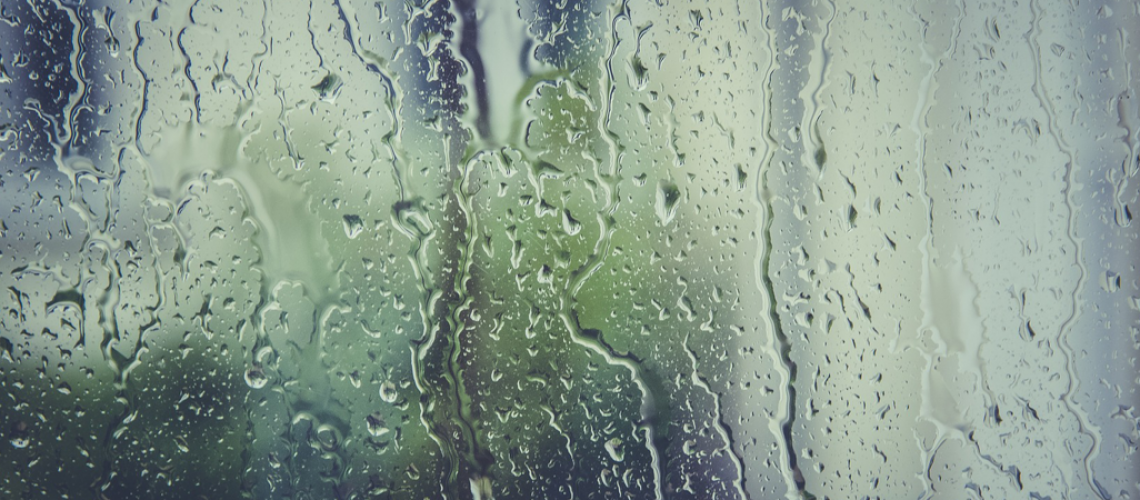What causes condensation and how to stop it
Condensation is one of the most common seasonal issues facing British homeowners, with one in five British homes experiencing condensation related problems during the winter months. What’s more, it’s estimated that around 70% of damp problems can be attributed to condensation.
It doesn’t matter whether you live in a listed building or a newly built apartment – condensation can have a big impact. It might have small beginnings, but if you don’t deal with condensation right away it can develop into greater and longer-lasting problems. These include damp and mould, which can damage your walls and furniture, and become health hazards to both you and your family.
What causes condensation? Condensation occurs when warm air collides with cold surfaces, or when there’s too much humidity in your home. This is especially common in winter, when your central heating system comes on in the cooler hours of the mornings and evenings. If you’ve noticed water streaming down the inside of your windows, you’re seeing the first signs of the problem.
In addition to central heating, everyday activities like cooking, showering, and drying clothes can release warm moisture into the air inside your home. When this moisture-packed warm air comes into contact with a chilly surface, it cools down quickly and releases the water, which turns into liquid droplets on the cold surface.
While condensation is rarely a problem in the summer, the amount of water in the air (otherwise known as the humidity) inside our homes is higher during the colder months. This is because we tend to have the heating turned up high and the windows closed. That’s why condensation is a bigger problem during this season, as it’s no longer confined to the bathroom. When the outside temperature drops, water can start to appear inside your home, especially on windows and walls.
While a bit of water might sound harmless enough, if condensation isn’t dealt with immediately it can go on to encourage black mould to start growing on your walls, ceilings, and around your windows. Not only is this stuff unattractive, having a lot of it in your home can lead to certain unpleasant health issues including sinus problems, skin rashes, and even bronchitis.
If the condensation problem in your home has already progressed to this stage, there’s no need to worry: you can read our guide on how to banish mould from your home for good.
How do I deal with condensation in my home?
The first step is to control the amount of condensation in your home. Use a classic window cleaner’s tool, the squeegee, to clean water droplets from windows, mirrors, and glass shower dividers whenever it starts to build up. When you’re done, use a soft towel to clean up any condensation you find on walls and other surfaces.
Once your home is nice and dry, it’s time to start looking into ways to prevent your condensation problem reoccurring. You could start by buying a dehumidifier to reduce the amount of humidity in your home. These work by pulling air through a fan and removing the vast majority of the moisture, helping to keep your surfaces dry. Invest in two or three, and place them in rooms where you’ve noticed the most condensation: these will most likely be your kitchen and bathroom. You could also move one into your bedroom on cold nights, as the heat from your breath can condense on the windows and walls.
You can also start to tackle the problem without spending a penny. When cooking, avoid excess steam being released into the air by keeping lids on your saucepans and making good use of your extractor fan. If you don’t have an extractor fan or it’s not the most effective, try to keep a window open when cooking, using the tumble dryer, or taking a shower. Whenever you use the kitchen or bathroom, it’s important to keep the door closed. Although it might seem counter-intuitive for ventilation, keeping the door closed is better for your home as it stops the humid air travelling to other rooms.
It’s also a good idea to try and avoid condensation from forming on cold surfaces in the first place by making sure your home is heated evenly. Keep the thermostat at the same temperature in every room, and if there’s a room in your home that you don’t use often, keep the door closed. You should also try to open the windows in that room for a couple of hours each day to prevent condensation and damp from forming.
Is there a long-term solution to condensation?
Unlike most other home maladies, preventing condensation is much easier than attempting to cure it. The only real way to avoid condensation in the long-term is to invest wisely in both ventilation and insulation.
Ventilation is key to keeping condensation at bay. It’s impractical to keep your windows open throughout the winter, so it’s worth having extractor fans installed in your bathroom and kitchen if you don’t have them already. Consider installing a smaller fan on an external wall and run this while doing the washing up or boiling the kettle. The extractor fan in the bathroom should be running whenever you have a bath, shower, or shave. If the room is still steamy when you’ve finished, leave the extractor running for a while and keep the door shut.
In addition to ventilation, you can also improve the insulation in your home to keep your walls above the dew point – the temperature at which the moisture in the air turns into beads of water. If you don’t already have double glazing, consider an upgrade. Double-glazed windows stay much warmer than single-glazed ones and therefore don’t experience as much condensation. There are also a number of free schemes offering home insulation for those who qualify, which are well worth looking into if you want to beat condensation altogether. Contact your gas or electricity supplier for more information.


